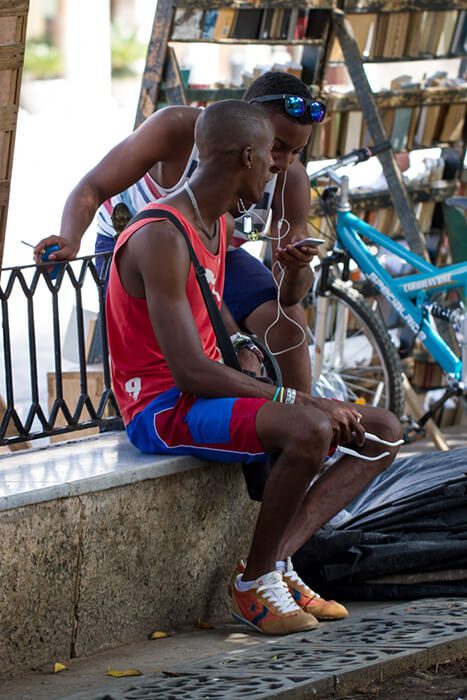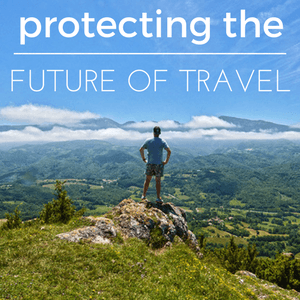This is a guest post contribution from our buddy Naomi Liz at Roaming the Americas, a blog full of helpful responsible travel tips. For a full bio and links to her social media page please refer to the bottom of the page.
Being culturally sensitive is an important part of being a responsible traveler and discovering the world in a meaningful way. But it doesn’t happen overnight and as you travel, you realize that there’s always more to learn and reflect on.
But hold up…that sounds like hard work! Isn’t traveling supposed to be fun?
Well, yes—there are definitely moments during travel that should be pure fun. Whether you’re sitting on a beach in the Philippines drinking cocktails or whitewater rafting through canyons, these are the moments that make you sit back and realize just how incredible life on the road is.

Now don’t worry, we’re not about to take all that away from you. Culturally sensitive travel isn’t about turning travel into a boring school field trip. It’s the opposite, really. Being culturally sensitive allows you to experience deep, authentic moments with the people that you meet on the road.In the end, it enriches your travels and turns those moments into lifelong memories.
Here are a few tips to help you be a more culturally sensitive traveler…
Learn About the Destination You’re Traveling To
From the history to the basics about culture, being curious about things beyond the “top 10 places to visit” will give you a great foundation for being more culturally sensitive. And this curiosity isn’t limited to before your trip—being informed gives you interesting and relevant things to talk about with locals, and it shows them you care about more than just checking places off your bucket list.
Guidebooks often have basic information and are a good starting place. Beyond that, you can look for fictional TV shows or books set in the location you’re traveling to, read stories from the local newspaper, and check out informative podcasts or documentaries about its history or culture.

Learn Some of the Local Language
I’ll keep it real with you—I’m a self-proclaimed language nerd, and I know not everyone shares this passion. But this doesn’t mean you have to dust off your college grammar books and make flashcards (although you definitely can). Learning at least some of the local language provides opportunities to build relationships that you’d never have without it. It shows people that you care enough about their culture and getting to know them that you’ve put in some effort to speak to them in their own language. As Nelson Mandela said, ““If you talk to a man in a language he understands, that goes to his head. If you talk to him in his language, that goes to his heart.”
Heading to Latin America? Check out our article on How to Choose a Spanish School That’s Right For You
Brush up on Hand Gestures
If learning a language can help you build relationships, hand gestures offer the wonderful opportunity of completely offending people. The way we speak with our hands is so second nature, and it’s hard to be mindful of the gestures we use. A simple “come here” signal that is used in the United States has—ahem—connotations in Latin America, and pointing with your index finger is rude.
Instead, people point with their lips and do a sort of wave towards the ground to motion for someone to “come here.” There are countless other examples from around the world of hand gestures that are harmless in one country and offensive in another. Take a few minutes to read up on what hand gestures are positive, neutral, or offensive in the places you’ll be traveling.

Dress Appropriately
While you might stand out as a foreigner based on your physical characteristics or language differences, the way you dress is something you have complete control over. People have different views on how far you should take this—especially for women traveling in religiously conservative cultures. The way I dress is one cultural barrier that I have the power to bridge by making some simple changes.
I don’t want my clothes to scream “American” or for that to be the first thing someone notices about me, and I also don’t want to offend my hosts. Take time to research how locals dress (from head to toe) in various situations—for meetings, work, the beach, and cultural or religious events. The more like a local you dress, the less you’ll stand out.
Observe Locals
I once heard a story about a guy who wanted to fit into Guatemalan culture better, so he sat on a street corner and just observed the local men for several days. He looked at how they were dressed, how they carried themselves, and how they interacted. While you don’t necessarily need to spend days sitting on a street corner, take time to people watch during your trip—maybe while you’re sitting at a park, eating at a restaurant, or enjoying a morning coffee at a neighborhood café.
How do people greet each other? How close do they stand when talking? What are their facial expressions and body language like? How loudly do they speak? Taking clues from the locals on how to behave is a fantastic start to understanding and respecting the culture.

Dig Below the Surface
Taking time to observe some outward expressions of cultural norms—food, language, dress, personal space—is a great way to help you become more culturally sensitive, but it’s those invisible elements of culture that can be really hard to grasp. What qualifies as rude? Or respectful? How is timeliness viewed?
These are things that aren’t always expressed outwardly, but they’re deeply embedded in our culture. They show up in our assumptions and are hidden within our everyday decisions. Learning about these invisible elements of culture definitely takes things beyond the basics, but it’s an important part of being a culturally-sensitive traveler.
For extra credit points, a good book for understanding culture is Foreign to Familiar by Sarah A. Lanier.

People Before Pictures
I’m both an introvert and a photographer, so my natural inclination toward taking travel photos is to be discreet and not interact with anyone. You know—the drive-by sniper method (apologies for using photography jargon, but that’s the official term). But I’ve learned to push past my fear of photographing strangers, and I’ve discovered incredible richness in forming a personal connection with someone before just snapping away.
I think there’s a place for street life photography as well, and forming personal connections isn’t always possible, but travel photography should always be approached from a place of respect. My mantra is: People before pictures. Be willing to miss “the shot” if it feels intrusive or exploitative.
Getting a little more practical, another element of this is to learn about local customs and beliefs, and make sure you’re not taking a photograph when it would be disrespectful (such as at a religious site). When in doubt, ask a trusted friend or guide who is comfortable enough to tell you “no.”

Take Time to Reflect
Thoughtfully processing through your experiences—the good and the bad—is such an important part of growing in your cultural sensitivity. If you make a good friend from the place you’re visiting, ask them questions when you don’t understand something, and give them permission to correct you or share cultural insights.
Take time to write in a journal. I find that free writing about all my questions and assumptions helps me think more deeply and often leads to epiphanies about myself and where I’m traveling. Memories tend to morph and fade over time, but having a written record keeps those memories accurate. If you’re traveling with someone who shares your cultural background, take time to discuss the things you’re observing and questions you have.
And don’t neglect the continual process of reflection after you’ve returned home—it’s just as important. So often we return home and jump right back into our lives, putting a full stop at the end of our trip. Cross-cultural travel is a continual journey, and we should be open to learning from our past experiences throughout our lives.

Lastly, Cut Yourself Some Slack.
I can’t tell you how many face-palm worthy moments I’ve had while traveling. There have been so many times when I’ve fumbled over language or done something and later thought, “I’m such an American.” While it’s important to reflect on those things, remember that being culturally sensitive isn’t a checklist that you’ll be graded on.
You’re going to make mistakes, and people might misinterpret your words or actions, but the beauty and richness of putting yourself out there in order to form relationships far outweighs those crawl-into-a-hole moments.
So don’t stress yourself out and constantly worry about making a faux pas. Aim to be respectful, but don’t get hung up on the inevitable mistakes. Being a culturally sensitive traveler doesn’t mean you’re not going to make any cultural blunders—it just means you’re open to a process of continual learning and reflection.
Want more great articles on responsible travel?











I always think I’m a pretty “culturally sensitive traveler” However, it’s nice to get a reminder. There is a lot that I could do better! Great article.
I feel the same way, Rebecca! It’s definitely a process of learning and lots of reflection for me. 🙂 Glad you enjoyed the article!
Awesome post! We lived in Mexico for awhile and although it was a fairly touristy area, I would get so mad when people took no steps to be culturally sensitive in any way!
Thanks for your kind words, Greg! How long did you live in Mexico? That sounds like it would be frustrating for sure. Thanks for reading & glad you enjoyed the post!
Yes to all these tips! This quote by Clifton Fadiman is a great reminder for travelers. One of my favorite travel quotes: “When you travel, remember that a foreign country is not designed to make you comfortable. It is designed to make its own people comfortable.”
That’s a great quote Therie! We’ll definitely remember that one 🙂
This is a wonderful post on responsible travel and should be mandatory reading for all travel bloggers, instagrammers, and all travel content creators – Take a bow Naomi. Have already shared it. I’m delighted to see I’m actively doing all on the list already.